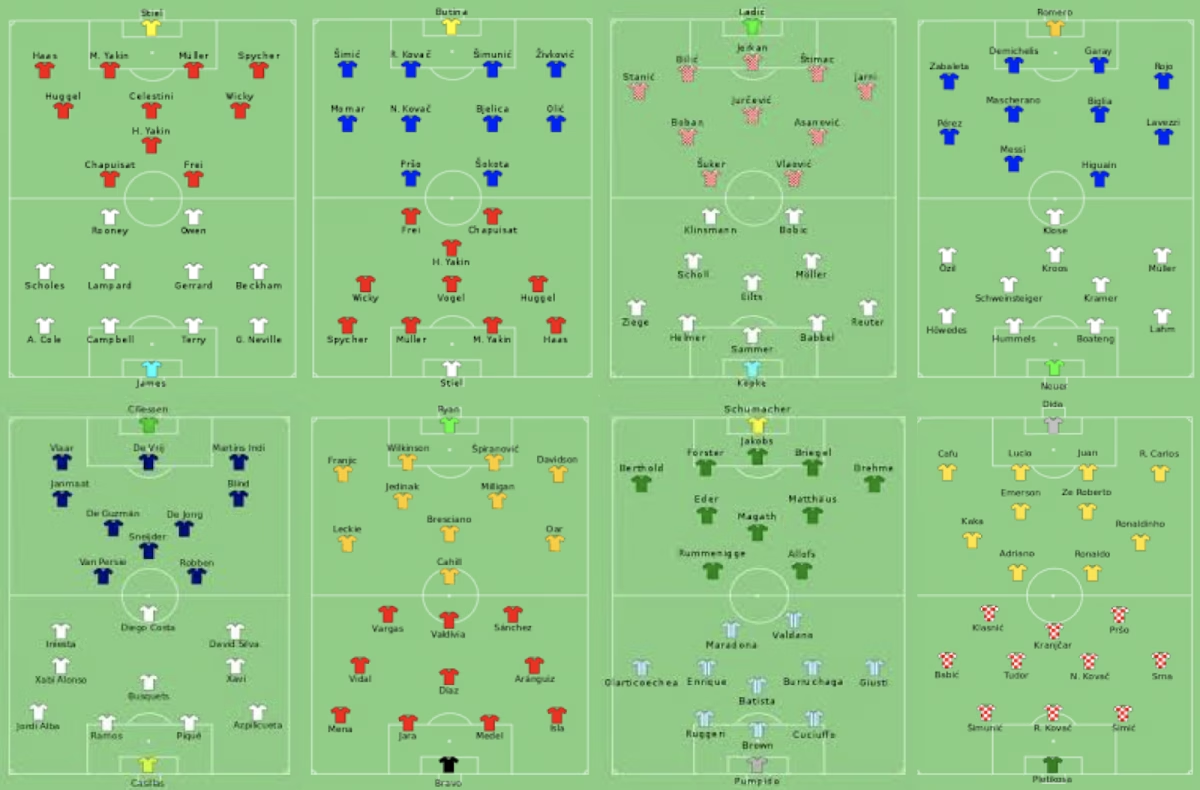Football, the beautiful game, is a constantly evolving spectacle. Tactics, once relatively simplistic, have undergone a remarkable transformation, from the direct, “route one” approach of the early days to the intricate, possession-based philosophies of the modern era. This journey through the evolution of football tactics reveals the ingenuity of coaches, the impact of individual players, and the enduring quest for dominance on the pitch.
The Early Days: Route One and Direct Play
In the early days of football, tactics were relatively basic. “Route one” football, characterized by long balls and direct play, was prevalent. Teams focused on physicality, aerial prowess, and exploiting individual brilliance. Wing play and crosses were key attacking strategies, with emphasis on delivering the ball to the target man.
The Rise of “Total Football”
The 1970s witnessed a revolutionary shift in tactical thinking with the emergence of “Total Football,” pioneered by Ajax under the guidance of Rinus Michels. This philosophy emphasized fluidity, positional rotation, and attacking flair, with every player capable of playing in multiple positions. Johan Cruyff, the embodiment of “Total Football,” became a global icon, inspiring a generation of players and coaches.
The Counter-Attacking Era:
In response to the dominance of possession-based football, counter-attacking tactics gained prominence. Teams like Liverpool under Bill Shankly and Bob Paisley, and later, Real Madrid under José Mourinho, employed high-pressing strategies to win the ball back quickly and launch devastating counter-attacks.
The Age of Possession Football:
The late 20th and early 21st centuries saw the rise of possession-based football. Barcelona, under Pep Guardiola, became the epitome of this style, emphasizing intricate passing combinations, patient build-up play, and dominating possession. “Tiki-Taka,” characterized by short, quick passes and intricate movement, captivated the world with its elegance and effectiveness.
The High-Pressing Revolution:
In recent years, high-pressing football has emerged as a dominant force. Teams like Jürgen Klopp’s Borussia Dortmund and Liverpool have employed an intense, high-energy style, pressing opponents relentlessly and forcing turnovers high up the field. This high-octane approach has revolutionized the game, demanding exceptional fitness, tactical discipline, and lightning-quick transitions.
The Future of Football Tactics:
The future of football tactics promises to be even more dynamic and innovative. Data analysis, technological advancements, and the increasing sophistication of player recruitment are all contributing to the evolution of the game. We can expect to see further refinements in existing tactical approaches, the emergence of new and exciting playing styles, and an ongoing pursuit of tactical dominance.
Conclusion:
The evolution of football tactics is a testament to the ingenuity and creativity of coaches, players, and analysts. From the direct play of the early days to the intricate, data-driven approaches of the modern era, the game has constantly evolved, pushing the boundaries of tactical innovation and captivating audiences worldwide. As football continues to evolve, we can expect to witness even more exciting tactical developments, ensuring that the beautiful game remains a captivating spectacle for generations to come.

Leave a Reply